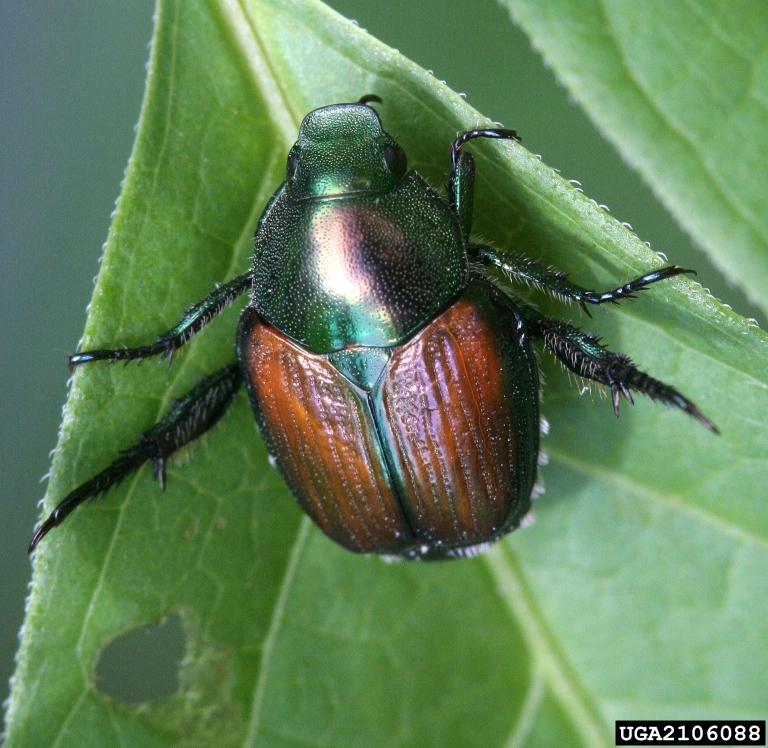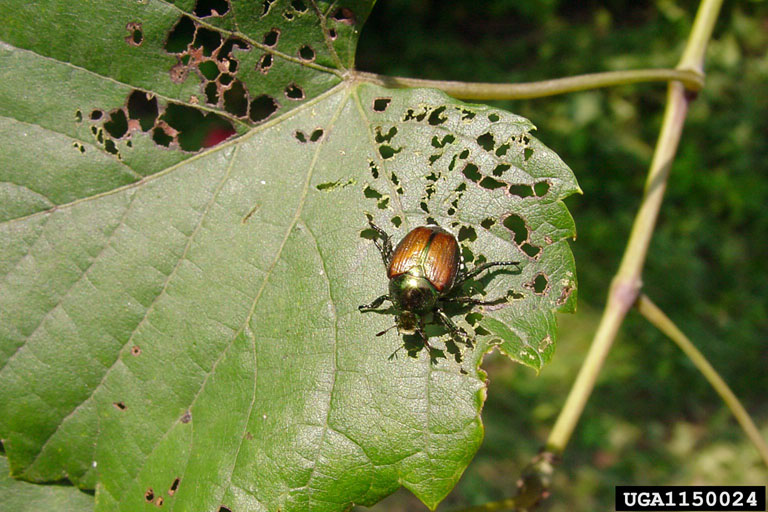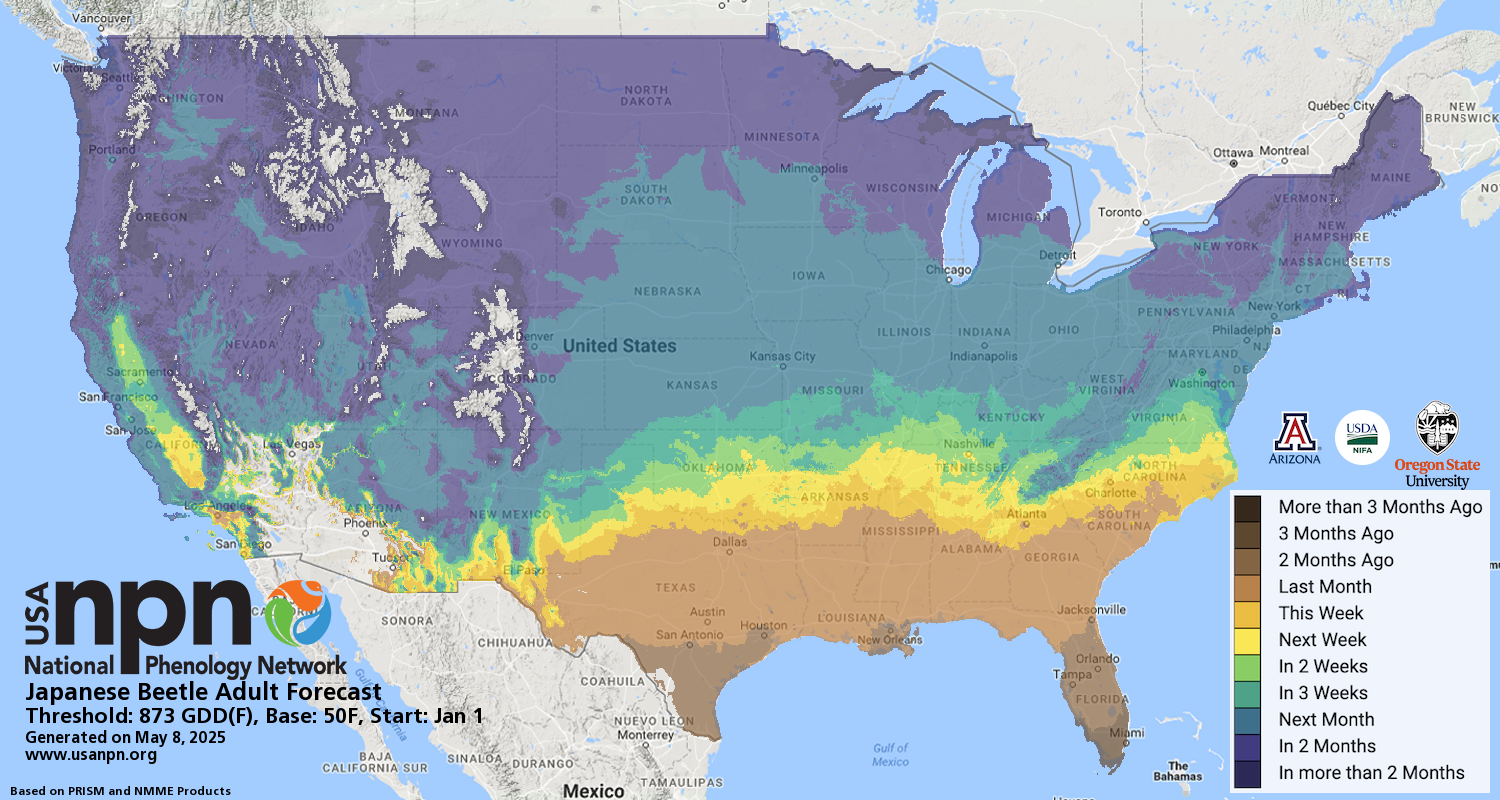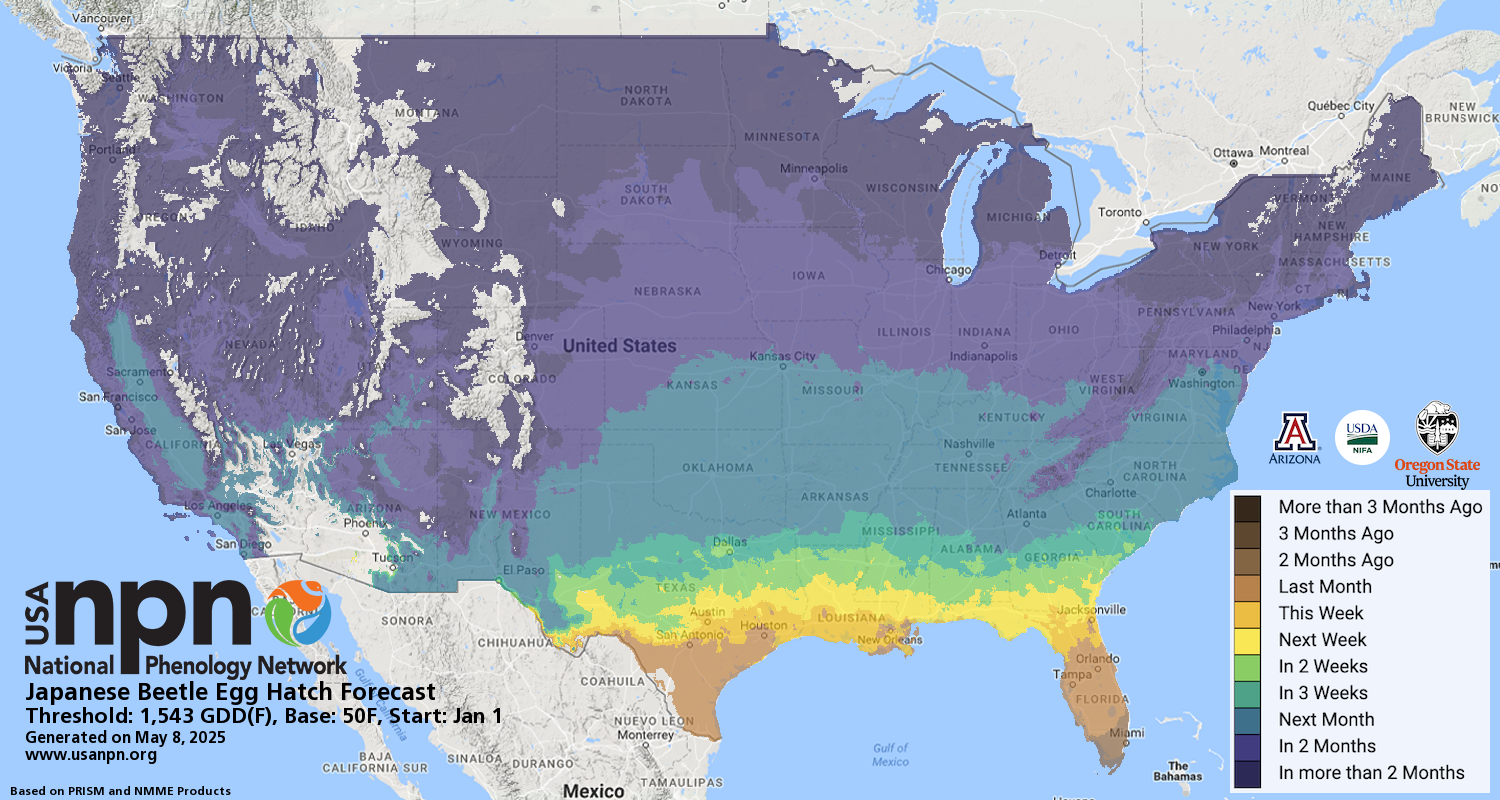Japanese beetle is considered to be among the most damaging turfgrass pests in eastern and Midwestern states. It has also brought large-scale destruction to garden plants and agricultural crops.
WHAT ARE PHENO FORECASTS?
Pheno Forecast maps predict key life cycle stages in invasive and pest species, to improve management efficacy. For insect pest species, Pheno Forecasts are based on published growing degree day (GDD) thresholds for key points in species life cycles. These key points typically represent life cycle stages when management actions are most effective. For Japanese beetle, we forecast the first emergence of adults and the average date of egg hatch in the spring, for the full calendar year. Watch a video on how to use the Japanese beetle Pheno Forecast.
Help us improve these maps! Our Pheno Forecast map products are still in development, and we seek input on their performance in your area. Give your feedback at the bottom of the page.
SIGN UP FOR PHENO FORECAST NOTIFICATIONS!
Sign up to be notified by email approximately two weeks and again six days ahead of key growing degree day thresholds for species of interest at your location

SPECIES BACKGROUND
Japanese beetle (Popillia japonica ) is a non-native beetle from Japan which was first discovered in the United States in 1916. Their numbers rapidly increased in the 1950s and 1960s as home lawns became popular. Japanese beetle has continued to spread, and large eradication campaigns are currently taking place in parts of the Pacific Northwest. In their larval stage, they feed on the roots of plants, particularly grasses. In their adult stage they feed on plant foliage and occasionally on flower petals. The beetle is considered a top pest of turfgrass and has caused large-scale destruction to field crops, berries, fruit trees, vegetables and a wide array of ornamental plants.
LEARN HOW TO OBSERVE PHENOLOGY OF JAPANESE BEETLE
Our learning module walks you through how to identify Japanese beetle, how to report its life cycle events, and why you should care.

ADULT AND EGG HATCH FORECAST
We forecast adult emergence and egg hatch based on growing degree days. The forecasts are available for the contiguous United States, except for those areas where the temperatures for the current year are expected to be either too extreme for Japanese beetle to survive or too cold for a life cycle event to occur. Pheno Forecasts of adult emergence of Japanese beetle may help with surveillance because adults are more detectable than grubs, which occur underground. Forecasts of egg hatch, which occurs approximately four weeks after first adult emergence, may help to manage young grubs with products such as Bt, milky spore, and beneficial nematodes.
EXPLORE THIS FORECAST
Learn more about this forecast using our visualization tool!
|
Phenophase |
GDD threshold |
Base temp |
Upper threshold |
Start date |
GDD method |
Model origin |
Source |
|---|---|---|---|---|---|---|---|
|
Adult Emergence (earliest appearance of adults) |
873oF |
50oF |
92oF |
Jan 1 |
Single triangle |
multiple states |
|
|
Egg Hatch (average date of egg hatch) |
1,543oF |
50oF |
92oF |
Jan 1 |
Single triangle |
multiple states |
The development of this forecast was funded primarily by USDA NIFA AFRI TSAB Award #2022-68013-37138 to support agricultural biosecurity.

